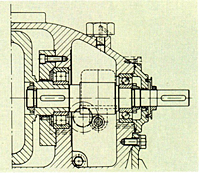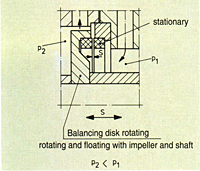General
Magnetic coupled DICKOW-Pumps of series HZSM/HZSMA are of sealless design. The containment shell forms a closed system with hermetically sealed liquid end. The properties of the integrated side channel stage allows the handling of entrained gas and operation under suction lift conditions.
Applications
Magnetic driven HZSM/HZSMA-pumps are designed to improve plant and personnel safety, especially when handling toxic, explosive or other dangerous liquids which react on contact with the atmosphere. For all these services the containment shell replaces double acting mechanical seals, along with external fluid reservoirs and the necessary control equipment. HZSM/HZSMA-pumps therefore offer exceptional benefits to the chemical, petrochemical and allied industries and fulfill all environment protection rules. Due to the fact that 90% of pump failures are caused by leaking shaft seals, the sealless design increases the availability and reduces maintenance costs. The HZS-type is used in tank farms, for offloading rail cars and trucks, filling of storage tanks and other applications where priming of empty suction pipes is required. Considering low NPSH-values, gas handling capability and sealless design, the HZSMA-type offers special benefits to liquified gas applications. Typical application is filling of LPG-trucks and rail cars in refineries.
Maximum Transmissible Power |
N/A 150 kW at 2900 rpm (250 Hp at 3500 rpm) |
Maximum Capacity (Flow Rate) |
N/A 1000 gpm at 60 Hz |
Maximum Head |
N/A 1500 ft at 60 Hz |
|
N/A
Sleeve bearings |
|
N/A
Balanced thrust loads |
|
N/A
Construction |



